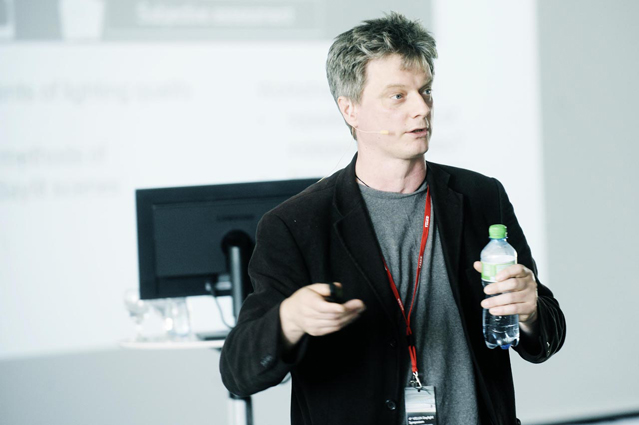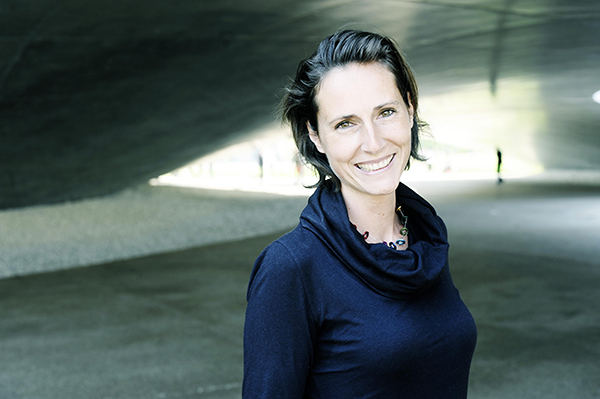Marilyne Andersen, PhD, is Full Professor in Sustainable Construction Technologies at EPFL in Switzerland, and Dean of the School of Architecture, Civil and Environmental Engineering. She is the head of the Interdisciplinary Laboratory of Performance-Integrated Design (LIPID) since 2010. Before joining EPFL’s faculty, she was an Associate Professor at MIT in the Building Technology Program and the Head of the MIT Daylighting Lab that she founded in 2004. Marilyne Andersen owns a MSc in Physics and specialized in daylighting through her PhD in Building Physics at EPFL and LBNL in California. Her research focuses on building performance in the architectural context, with a special interest in the use and optimization of daylight and passive solar strategies. She pursues pioneering work in comfort and health implications of daylight as well as low-energy building technologies. This interdisciplinary work at the interface between the domains of architectural design, building engineering and more fundamental science has opened new development and cooperation perspectives between otherwise remote research fields. She is the author of over 90 papers in peer-reviewed journals and international conferences and the recipient of several awards including three best paper awards, the Taylor Technical Talent Award from the Illuminating Engineering Society, and the EPFL Chorafas prize in sustainability for her PhD thesis.

Barbara Szybinska Matusiak, PhD, is trained as architect and has six years architectural practice. During this period she won several closed architectural competitions in Norway. She joined the Faculty of Architecture NTNU in 1994 as a research fellow. Her doctoral project was devoted to daylighting in linear atrium buildings at high latitudes (finished 1998). She designed the artificial sky and artificial sun for the new daylight laboratory (constructed 2000-2002) and the new full-scale room laboratory ROMLAB (finished 2006) at the same Faculty.
She has been involved in many Norwegian and international scientific projects dealing with daylighting and artificial lighting in architecture, for example: project leader of the “Visual environment in department buildings”, project leader for STEP, a bilateral Polish-Norwegian scientific project dealing with sustainable redevelopment of public buildings, member of Zero Emission Building program, partner of the “Translucent façade” project and member of the Nordic nett-work., SYN-TES
Her teaching activities (mainly master courses) are devoted to daylight/artificial light in architecture and to architectural design of interiors, where light and colour are the most important elements. She has developed, together with docent Karin Fridell Anter, the international PhD-course: Nordic light and colours.
She has funded the interdisciplinary Light & Colour Group at the NTNU, Faculty of Architecture, in 2011: http://www.ntnu.edu/bff/lightandcolour
She supervises 4 PhD-candidates who uses experimental methods (and laboratories) to find answers for intriguing questions dealing with light and/or colour in architecture.
Jennifer A. Veitch, PhD, is best known for her research on lighting quality, individual controls, and environmental and job satisfaction in open-plan offices. Dr. Veitch is a Principal Research Officer at the National Research Council of Canada, where she has led research into lighting effects on health and behaviour for over 20 years. She is a Fellow of the Canadian Psychological Association, the American Psychological Association, and the Illuminating Engineering Society of North America. In 2011 she received the Waldram Gold Pin for Applied Illuminating Engineering from the International Commission on Illumination (CIE). She serves CIE as Director of its Division 3, Interior Environment and Lighting Design.
Peter Boyce, PhD, earned his doctorate in Reading University, England in 1965. In 1966-1990 he worked as Research Officer in Electricity Council Research Centre, England. In 1990-2004 he was the Head of Human Factors at the Lighting Research Center, Rensselaer Polytechnic Institute, New York. Since 2004 he has been working as an independent consultant. His current interest areas are photobiology, lighting for elderly, security lighting, light pollution and lighting quality. He has published the book Human Factors in Lighting as well as many papers in recognized journals.
Jens Christoffersen, PhD, For many years I have been involved in national, international and European research programmes on Light and Daylight while working at the Danish Building Research Institute. In 2010 I joined the VELUX Group where I work in the Daylight, Energy and Indoor Climate group (DEIC). Our role in the VELUX Group is to be a knowledge and competence centre in the area of daylight, energy and indoor climate – related to the effects of VELUX products in buildings. Hereunder, to ensure relevance and promote expanded use of VELUX products by providing specific documentation and information within the fields of daylighting, ventilation, indoor air quality, energy use and thermal comfort.








